Both scary enough to bring chills down your spine, a bear and an anaconda are some of the most terrifying animals that exist today.
They are both apex predators, sitting at the top of the food chain. So it’s not hard to wonder what would happen if these two creatures encountered one another and got into a fight.
To determine the winner of a bear vs anaconda duel, let’s use the available information and analyze what would happen in a fight to the death.
A slight note: Bears have encountered snakes and they all backed away from one another and avoided a fight. So in our hypothetical battle between the two, let’s imagine that they had no other option but to fight to the death.
And to quote a reference from a popular animation from 2008: “Finally! A Worthy Opponent! Our Battle Will Be Legendary!”
Before we start, what do you think, which animal slays the other in this battle?
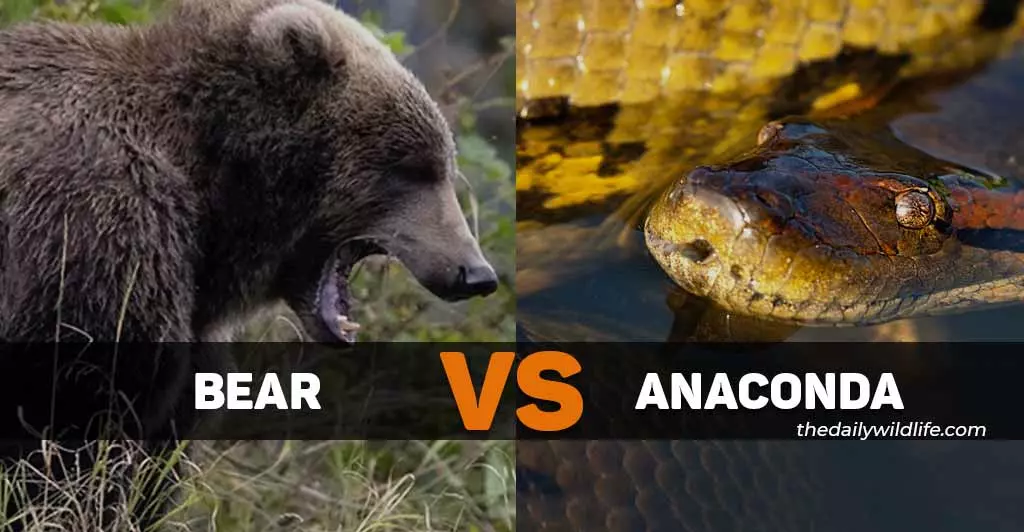
Bear Vs Anaconda – A Quick Overview
First we need to decide which species of bears and anacondas will compete in this duel. To make the duel more interesting, a Grizzly bear will represent the eight extant species of ursids in this battle.
In the opposite corner, we will have a green (giant) anaconda, the biggest subspecies of anaconda in the world.
Next, let’s compare several critical attributes and skills that might play a role in determining a winner of this duel.
| Bear | Anaconda | |
| Size | – Height: 3.5 ft at the shoulder – Weight: 400-790 lb – Length: 3.3-9 ft | – Length: 9-20 ft – Weight: 60-180 lb – Diameter: 1 ft |
| Speed And Movement | – 35 mph on land – up to 6 mph in the water | – 5 mph on land – 10 mph in the water |
| Teeth And Biting Strength | – 1,160 PSI – 42 teeth (4 canines) | – 900 PSI – 14 teeth |
| Senses | – Excellent sense of smell – Good hearing (2x better than humans) – Human-like eyesight (color vision) | – Excellent sense of smell (vomeronasal system of odor detection) – Limited hearing – Poor eyesight |
| Defensive Powers | – Size – Thick fur – Climbing ability and speed to run away – Fur fluffing as an intimidation tactic – Standing on back legs | – Hiding in water and mud (camouflage) – Coiling into a ball in order to both protect the head – Size |
| Offensive Powers | – Excellent strength – Sharp teeth and lethal bites – Strong paw punches – Overpowering and pinning down enemies | – Powerful bites – Strong muscles to suffocate the enemy – Ambushing – Excellent predatory skills |
| Aggression Levels | High | Moderate |
What Are Key Differences Between A Bear And An Anaconda?
The most significant difference between a bear and an anaconda is their size, morphology, and diet, among other things. Bears are quadrupedal omnivores that eat a variety of other food apart from meat.
Anacondas, on the other hand, are carnivores and do not have limbs like bears. They have scales on their bottom sides that grip the ground and propel the snake forward.
Anacondas live in tropical rivers and swamps, either in the rainforests or grasslands, while bears can be found in forests, mountains, tundras, deserts, and grassy areas. Bear are warm-blooded animals; this is a disadvantage, as anacondas have a way of detecting such animals. Anacondas are cold-blooded, as all reptiles are.
Key Factors In A Fight Between A Bear And An Anaconda
To determine the winner of this duel, we will take into consideration several factors. We will compare the sizes between a bear and an anaconda, their agility and movement capabilities, their brute strength, offensive, defensive capabilities, and some battle maneuvers and tactics they might apply to win this duel.
Bear Vs Anaconda: Size
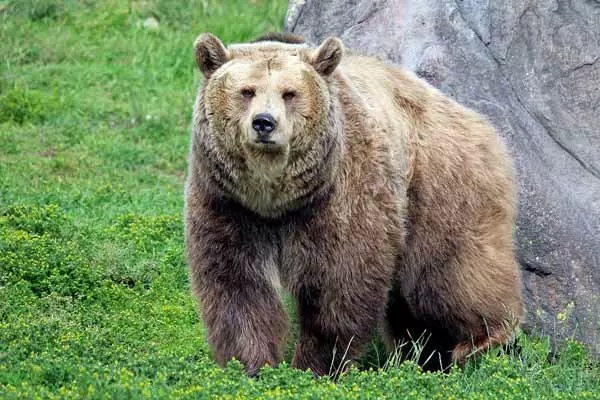
Bears range in size: the smallest are sun bears that weigh from 60 to 140 pounds, and the largest are Kodiak bears that reach up to 1,500 pounds. Grizzly bear, our fighter in this duel, can weigh between 400 and 790 lbs. The biggest ever Grizzly bear that was recorded weighed around 1,200 pounds.
Green anacondas are the heaviest snakes in the world. The biggest anaconda ever recorded weighed 500 pounds and was 27.6 ft long. Admirable, but still a lot less than a bear.
When it comes to size, a bear has the advantage over an anaconda.
Bear Vs Anaconda: Speed and Movement
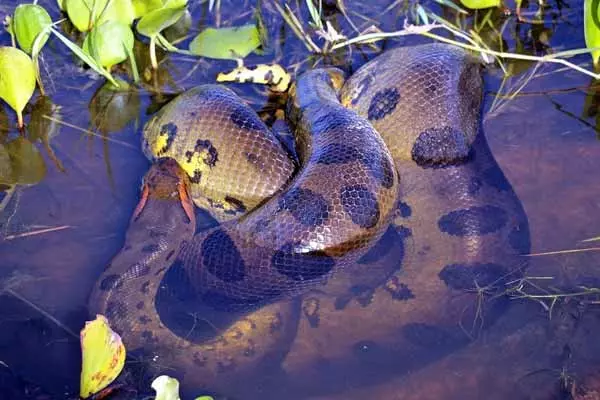
Despite their large size and stocky build, bears are rather fast animals. They reach top speeds between 25 and 35 mph on land and can swim up to 6 mph in water. Bears are excellent swimmers and can even climb trees. They are not the most agile creatures though.
Considering the way they move, anacondas are decently quick. They can move around 5 mph on land. Anacondas are much better when it comes to water; green anacondas can reach up to 10 mph underwater. They tend to float beneath the surface of the water with their snouts above the surface. Anacondas will also climb trees to catch some birds.
When it comes to speed on land, a bear has the advantage; when it comes to water, an anaconda has the advantage. This makes it tied between the two in this category.
Bear Vs Anaconda: Teeth and Bite Power
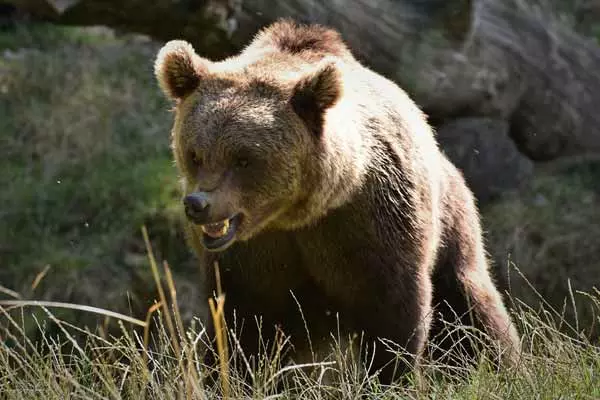
A grizzly bear has 42 teeth. Its teeth are not very long, but they are extremely sharp. Bears have lethal canine teeth around 2-3 inches long to tear the flesh of their enemies. Grizzly bears also have strong jaw muscles that can produce a bite force of 1,160 pounds per square inch (PSI).
The green anaconda (Eunectes murinus), the largest of the boas, usually has 15 teeth on its upper jaw. Despite being small, an anaconda’s teeth are curved and have extremely sharp edges. Anacondas have flexible and powerful jaws that scientists estimate can produce a bite force of 900 PSI.
When it comes to teeth, bite power, and strength, a bear has the advantage over an anaconda.
Bear Vs Anaconda: Senses
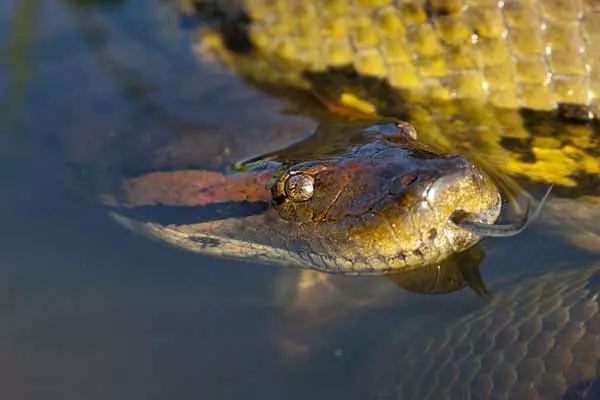
A bear’s strongest sense is smell. It can pick up a scent of an animal that is over a mile away. It is said that a bear’s sense of smell is 2000 times better than that of humans. They also hear well and have a decent sense of sight.
Anaconda’s strongest sense is smell. It has an organ called the Jacobson’s organ, which helps it smell, rather than taste, molecules in the air. To pick up the scent in the air, an anaconda will flick its tongue. An anaconda has limited hearing but may still detect sounds and vibrations. It also has heat-sensing pits along the lips that can detect the body heat of any warm-blooded animal, even in complete darkness. That makes it easier to spot an approaching bear.
When it comes to senses, despite having an excellent sense of smell, many studies have shown that bears are not the best at detecting snakes. In one case, one bear started sniffing, passed 4 inches above the snake, but still could not detect it.
That’s why snakes have a slight advantage over bears in this aspect.
Bear Vs Anaconda: Defensive Attributes
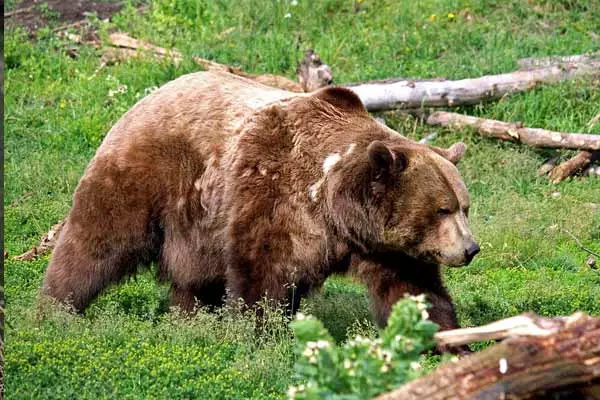
To protect themselves from weather and other animals, bears have thick fur and a big layer of fat. Their skulls are very thick, and their arteries are hidden deep under the layers of fat and muscle.
When defending themselves, bears will fluff up their fur to look bigger and stand on their hind legs. They will also growl, pound their paws on the ground, charge towards the enemy, and then sharply stop. If feeling frightened, a bear can easily run away to escape its enemy or climb a tree to avoid it.
Anacondas also have decent defensive mechanisms that keep them safe. If feeling frightened, an anaconda might coil to protect its head before launching a swift attack. Anacondas are also known to camouflage themselves by burrowing into the mud or retreating to water.
It is tied when it comes to defensive attributes between a bear and an anaconda.
Bear Vs Anaconda: Combat Skills And Predatory Instincts
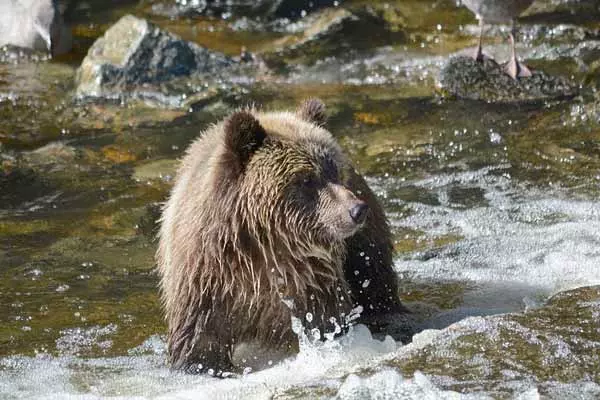
Bears kill their prey by biting it in the neck or on the back. Apart from strong bites, bears have very strong front paws, sharp claws, and can easily kill an animal by breaking its spine. Bears are ferocious killers and hunters leaving mauling marks all over the body of their enemies.
Anacondas prefer to ambush their prey, land a strong bite, use their strong muscles to wrap around, and kill their prey. A recent study discovered that by squeezing around the body, anacondas do not suffocate their prey to kill it – the squeezing overwhelms the circulatory system, the blood cannot get to the brain, and the animal dies within seconds due to ischemia.
If that does not work, they drown them. Anacondas are non-venomous snakes that usually hunt during the night.
A bear and an anaconda have unique fighting abilities we will factor in and determine the winner of their duel.
| Battle Features | Bear | Anaconda |
| Size | ✔ | ✘ |
| Speed And Movement | ✔ | ✔ |
| Teeth And Bite Power | ✔ | ✘ |
| Senses | ✘ | ✔ |
| Defense | ✔ | ✔ |
| Offense | ✔ | ✔ |
Read More: Bear Vs Tiger
Who Would Win In A Fight Between A Bear And An Anaconda?
An adult bear would win a fight against an adult anaconda. The anaconda is one of nature’s deadliest killers, but the bear’s size, strength, and paws would be enough to overpower even the largest of anacondas.
The anaconda would most likely lurk in murky waters of a riverbank, using its camouflaging colors to conceal itself and wait for a bear to come to drink.
If a bear isn’t able to detect the nearby anaconda, the snake could surprise it and sink its teeth into the bear’s thick fur. But once the bear realizes what has happened, the fight is over. The bear will pin down the reptile and follow up with a barrage of claw and teeth attacks.
It may seem like the anaconda could endure the fight long enough to wrap around the bear’s body, but in almost any scenario, an anaconda ends up as the bear’s next meal.
The bear is simply a lot bigger, faster, stronger, and better equipped to deal lethal damage to the anaconda’s body. The only chance an anaconda has is if it managed to wrap around a bear’s body while they are both in water and drowned it.
Read more: King of the jungle against the largest bear – who wins? or American bald eagle against a wolf – who wins?